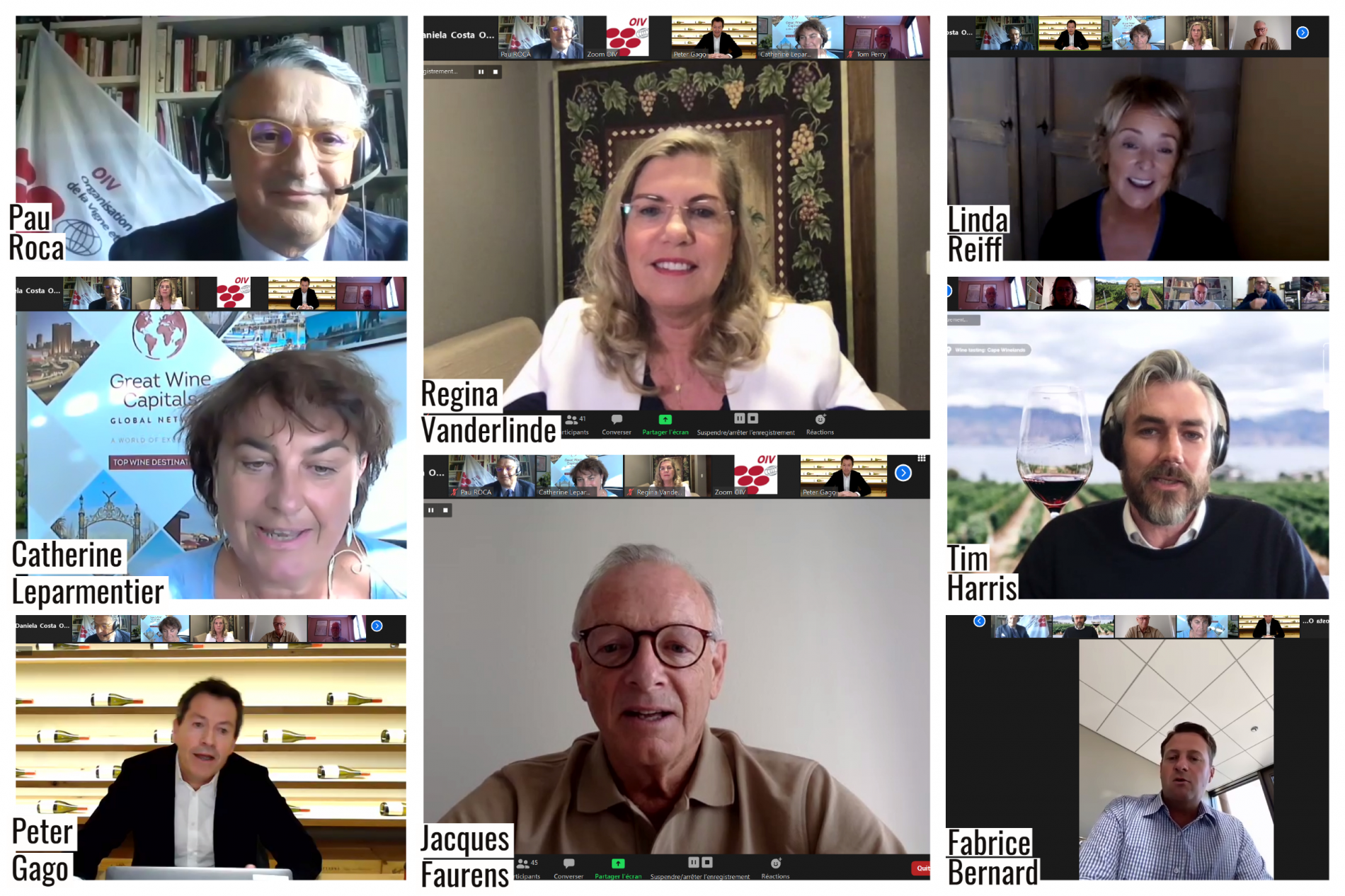
Due to the pandemic impacting us all, our organisation recently held these meetings online for the first time. Inevitably, the current health crisis has taken a prominent place.
The expert groups ECOMAR (Economic Analysis, Markets and Consumption) and STATCO (Situation and Statistics) were invited to answer a questionnaire on the impacts of this crisis. The main wine-growing countries (about 15) answered and the results were presented at the meetings held throughout June.
In this article we summarise the main outcomes of the questionnaire, as identified and discussed by OIV experts. The summary of conclusions is provided by Françoise Brugière, the Vice President of the ECOMAR group.
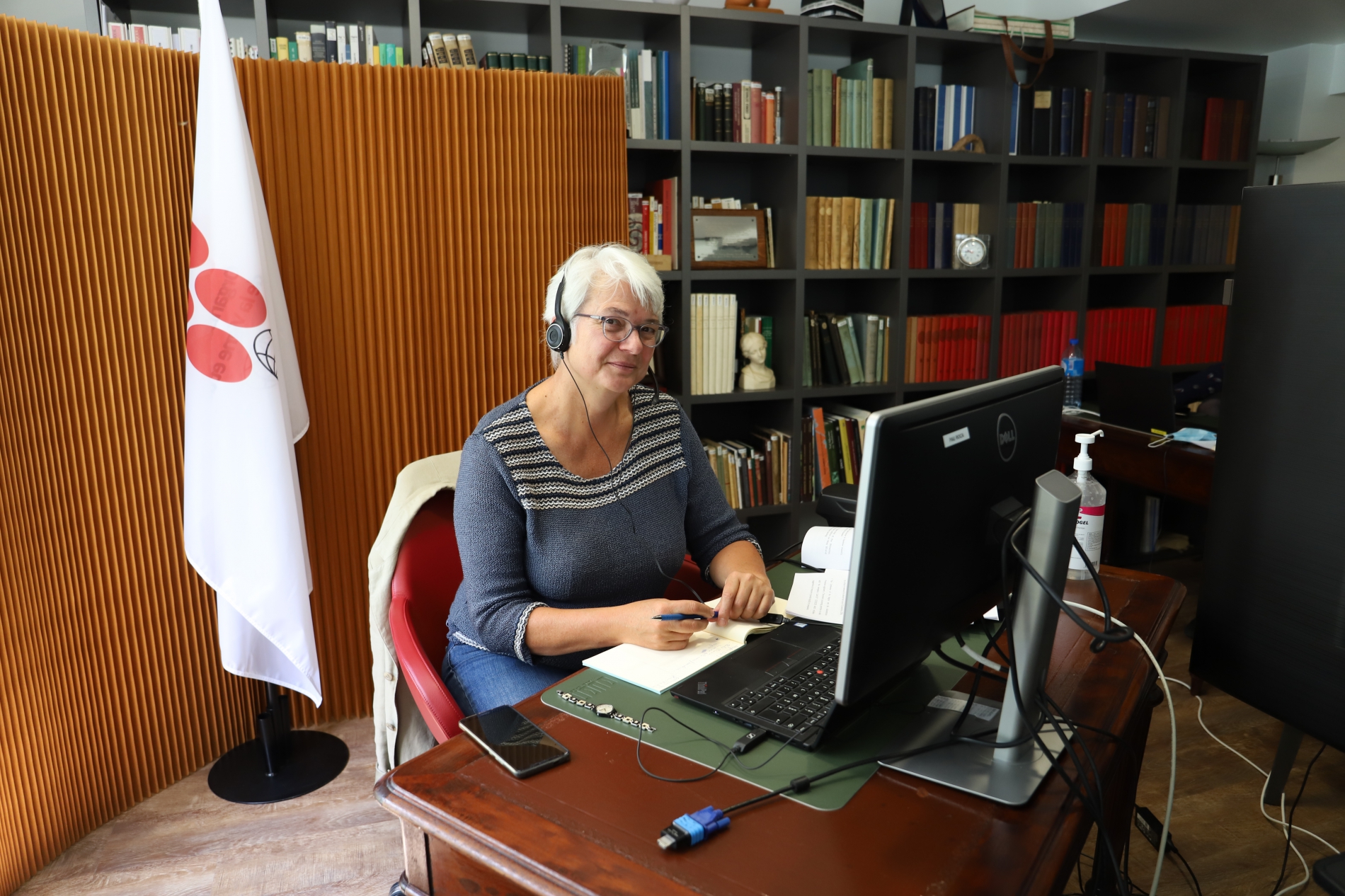
A crisis preceded by a challenging context
Quantitative analysis of the international wine trade in the first half of 2020 is delicate. Indeed, the health crisis comes after a disturbed end of 2019 in China and Hong Kong and, more specifically for France, by the «Trump tax». With the arrival of the pandemic, according to the OIV experts, logistical problems were caused by the implementation of sanitary protocols at ports and airports entrances, the suspension of passenger flights, the priority given to care for those carrying medical equipment, and then to providing basic necessities. Subsequently, with or without the inclusion of wines, these were recovered over the weeks. Nevertheless, world wine trade recorded a decline in value of 6.3% in February and 10.7% in March (compared to February and March 2019). More specifically, Chinese imports decreased by a quarter in both volume and value for the first 4 months of 2020 compared to the last 4 months of 2019. Brazil, Switzerland, France (over 4 months), the UK, Germany and Russia (over 3 months known) reduced their imports while the USA, Canada, Ireland (in value) as well as Spain, Czech Republic (in volume) increased theirs. The price trend is clearly downwards for all countries.
Overall impacts and measures taken
In all countries, the halt in tourism and the closure of bars and restaurants led to a sharp decline in points of sale. The shift to home sales was very partial and mainly concerned less expensive products, particularly with the development of bag-in-box sales.
All BtoB marketing actions and especially the major international fairs were cancelled, as well as wine festivals. The organisation of competitions and tastings was also disrupted. Currently, digital versions of these events are being tried, but the feedback is somewhat misty.
In all countries, measures for all sectors, more or less generous, of state aid for employment through measures to help businesses with their cash flow have been introduced. Companies of all sizes, from specialist retailers to wine growers and cooperative wine cellars have developed e-commerce solutions with delivery or “click & collect” options, more to keep in touch with customers than to generate significant income.
Southern Hemisphere harvest affected
Caught by surprise, countries in the Southern Hemisphere had to act urgently to complete the harvest. They were confronted with difficulties in terms of labour displacement, implementation of sanitary regulations for vineyard and cellar workers (supply of personal protective equipment, hydro-alcoholic gel and masks, rotation of teams without contact with each other, etc.).
In particular, the South African wine industry had to face the total prohibition of alcohol sales on the domestic market, and for several weeks, wine export was also halted. After negotiations, the continuation of the vintage, wine transport and export were again allowed.
Concern about current and future challenges
Economically speaking, in the short term, the stocks accumulated during the weeks of lockdown, especially on the most highly valued products, will feed the fall in prices. The upcoming harvest in the Northern Hemisphere could exacerbate this situation. In the medium term, in all countries, many expected bankruptcies of tourism and retail businesses due to the demand shock will have immediate consequences for their suppliers. The forthcoming economic and possibly financial crisis is likely to have an impact on the leisure sector by refocusing the budget of most households on basic necessities.
On a more psychological level, the health crisis, the lockdown of half of the world’s population for several weeks and the persistence of the epidemic risk could permanently undermine the value of sharing and conviviality that drives the development of wine consumption in the world.
If this crisis falls into the collective unconscious that one must be alone to be safe, that a group of more than 10 people is an epidemic cluster in power, the resumption of qualitative wine consumption will be compromised.
What’s next?
In line with the OIV Strategic Plan and the issues for which they are responsible, the two groups of experts undertake to work on different axes of analysis and are organising remote work in the coming months on the following issues:
- the evolution of the world wine stock,
- changes in consumption practices (distribution channels, consumer opportunities, quality signs, prices, etc...)
- the evolution of wine tourism and, more broadly, the monitoring of the restaurant and tourism sector,
- exchanges on the crisis management tools implemented
- the digitalisation of the wine sector (marketing, trade, e-certificates…)
* The OIV Spring meetings are an opportunity for our expert's groups to get together. These groups are responsible for studying scientific and technical issues within the scope of the OIV Strategic Plan and are each attached / related to the respective Commission by topic. See the OIV Scientific and Technical Committee Organisation chart.


In the interests of best serving the Member States that make up the International Organisation of Vine and Wine, the responses were analysed and sent to the platform in question, to improve this service for potential future virtual meetings.
Here is the analysis and proposed explanation.
Out of the 150 responses obtained (37%), users indicated that, overall, they were satisfied, with an average rating of 8/10.
Over the 22 meetings of the 4 Commissions and Sub-Commissions, almost half of the experts (48%) participated in 2-5 meetings. In cross-analysing the responses to questions 1 and 4, it can be observed that the difficulty in using the platform decreases drastically as the number of uses increases.
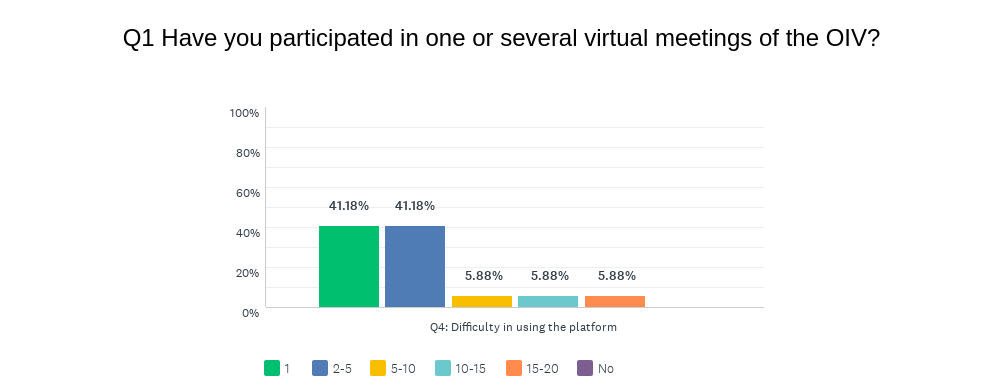
The OIV had drawn up a user guide beforehand to prepare attendees as best as possible, with a list of steps to follow to ensure meetings are conducted properly. The relevance and usefulness of this approach will be re-evaluated based on the average rating, which was 8/10.
Points to be improved
There were some shortcomings encountered when joining and participating: 41% of respondents had issues connecting to the internet, 31% had sound problems and 10% had camera problems. Additionally, 16% of the experts found the KUDO platform difficult to use: as an example, 11% of experts had difficulty requesting access to the floor (space to speak). As a reminder, requesting to speak on KUDO entails two steps: first, a request to speak from the expert, and second, the moderator's acceptance so that the expert may appear on the floor and speak.
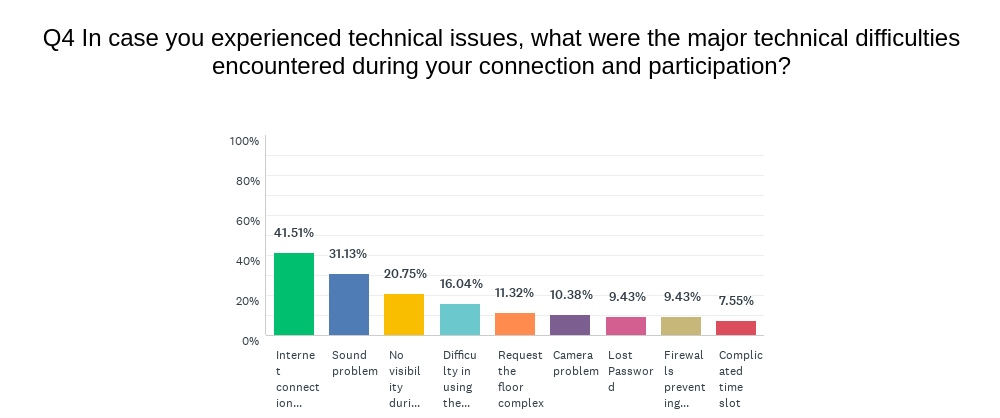
Due to the way it functions, the KUDO platform can host up to 5 people on the floor at any one time. Nevertheless, the absence of visibility during meetings was a concern for 20% of experts surveyed. The limitation on the number of people is due to the bandwidth required by KUDO, and it was the OIV’s decision to treat the floor in the same way as during in-person meetings.
Other minor problems were indicated, such as the time window for meetings (8%), a lost password (9%) or firewalls blocking KUDO (9%), and these should also be kept in mind for the future.
However, despite the difficulties encountered, 83% of the experts surveyed agreed that these technical problems were resolved efficiently by the technical team available to them. Indeed, the problems experienced by each participant were continually monitored throughout the month of meetings.
Strengths of the platform
At the same time, there were some notable advantages that emerged from using this platform for the spring meetings.
The availability of simultaneous interpreting was welcomed by 83% of respondents. Indeed, the KUDO platform enabled experts to follow the meetings in the 5 official languages of the OIV – an essential prerequisite that was decisive in the OIV's decision to use KUDO.
The possibility of joining meetings from their country of origin was one of the main advantages for 68% of those surveyed. Holding virtual meetings not only allowed for progress to be made on the work, with 18 resolutions being advanced to step 7, but also resulted in a 56% increase in expert participation between 2019 and 2020.
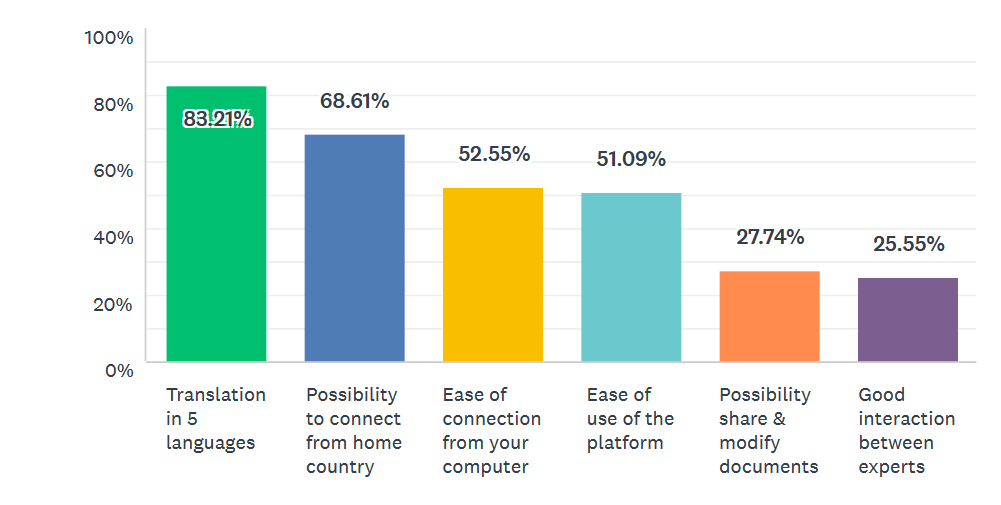
Despite the absence of direct contact, the vast majority of participants indicated they were generally satisfied (7/10) with the capacities for interaction and requesting the floor provided by this platform.
There was an open question at the end of the first part of the questionnaire, where the experts were invited to make suggestions to improve future OIV meetings on the platform. The OIV took careful note of the 85 responses received and sent these comments to KUDO.
The main trends that emerged relate to optimisation of the chat (direct channel with the operator, more clarity in private chats, etc.), the need to clearly identify who is speaking, and the sometimes-lengthy registration process. Some respondents suggested also using the platform for the electronic working groups in order to get better acquainted with it.
The OIV expert profile and cross-analysed trends
A second, optional questionnaire was made available to draw up a portrait of the typical user during the June meetings.
The typical expert worked from home (59%) on a professional computer (64% [57% specifically on a laptop]) that was less than 3 years old (42%). A total of 86% of users ran Windows and 91% used Google Chrome as their browser. WiFi connection was preferred (57%) and 43% used fibre optic. The accessories used were mainly components built into their computer, with 86% having an integrated camera and 39% integrated audio. However, 39% also used a headset. Finally, among the people who did not participate in the meetings, 53% cited lack of time as their reason for not joining, rather than technical issues.
Cross-analysing data to create this profile has enabled us to understand the origin of some failures. For example, use of the Chrome browser was necessary for fluidity of speech. The first graph shows that only 13% of experts who used this browser had problems with requests to speak, compared with 60% of those using Firefox.
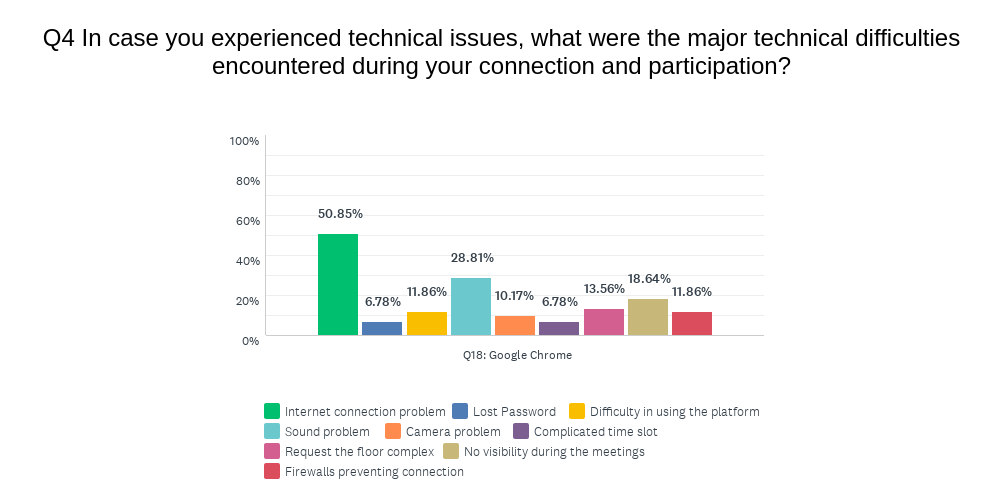
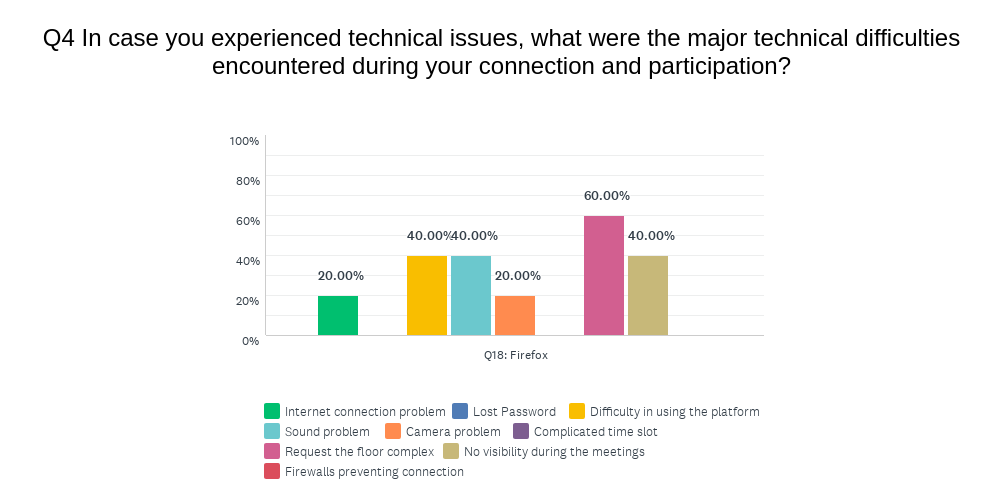
In the same vein, people using 4G had many more connection problems (66%) than those using cable or fibre optic (38% respectively).
Finally, many sound and video issues can be explained by an absence of use of appropriate hardware devices: for example, the use of an external headset reduced the citing of sound problems from 37% to 16%.
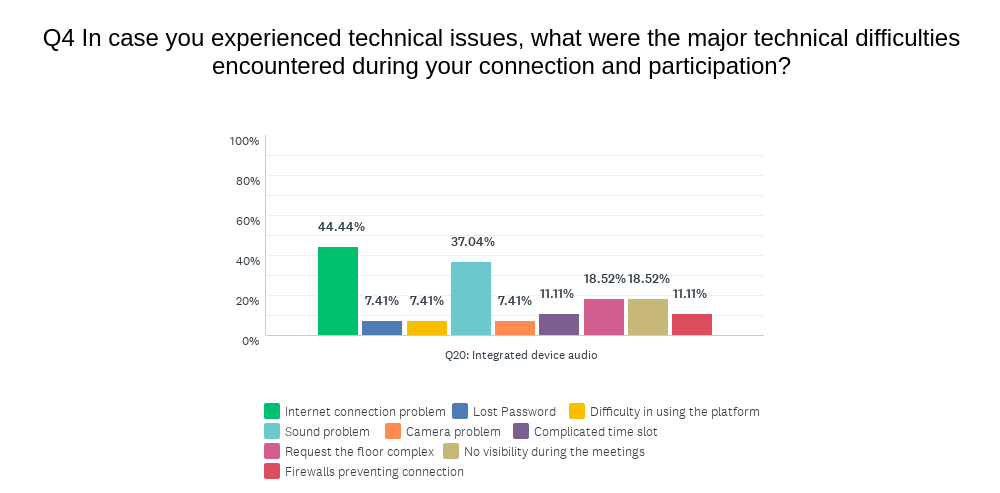
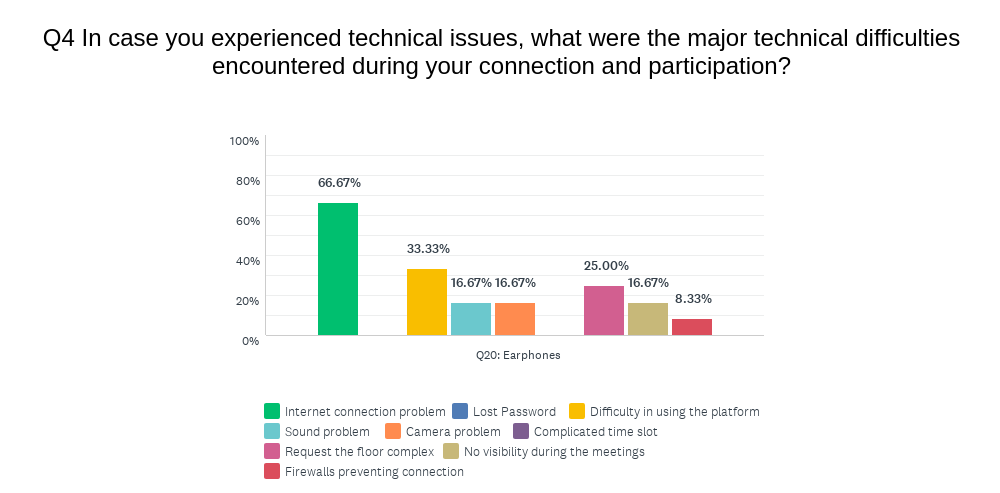
Following a debrief meeting with KUDO and the questionnaire feedback, a second document will be drawn up with the specifics of points to be solved before the next meetings.
Click here to see the meetings in pictures!

OIV Awards: information and the registration form of the 2021 Edition are available here.
Registrations: September 1, 2020 - February 28, 2021
● Paper printed books in the 11 categories.
● Interactive digital Tool (Websites, Webformation) in the categories: Viticulture and Sustainable Vitiviniculture, Oenology, Vitivinicultural Economy and Law, History, Literature and Fine Arts, Wine and Health.
Magazines, commercial guides and commercial Websites are not accepted.
For any question: jurydesprix@oiv.int
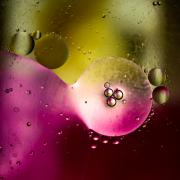
2020 - OIV Research grant program in support of priority programme fields
All information here.
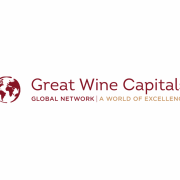
On Wednesday September 2nd, the International Organisation of Vine and Wine (OIV) had the pleasure of organising a virtual welcome meeting jointly with the Great Wine Capitals Global Network (GWC) to celebrate the recent observer status of the network at the OIV.
The President of the OIV, Regina Vanderlinde, addressed the opening speech expressing her desire of a fruitful feedback relationship between the two entities: “As an intergovernmental organisation of a scientific and technical nature, the OIV provides a comprehensive overview of the global state of the vine and wine sector. It works to harmonise practices, supports the evolution of the sector as it faces contemporary challenges, such as digitalisation, climate change or wine tourism, thanks to its large network of international experts. And it relies on its observers to bring up the very concrete aspects of the field.
Each observer, through the specific nature of its activity, contributes to providing the OIV with food for thought. They represent a direct contact with the actors and stake-holders of the sector, which is fundamental for the OIV.”
During this meeting, the Director General of the OIV, Pau Roca, and the Managing Director of GWC, Catherine Leparmentier, presented their respective structure and the advantages that this collaboration will generate.
Three speakers from GWC and its President, Jacques Faurens, then provided the attendees with an insight on different cities member of GWC.
